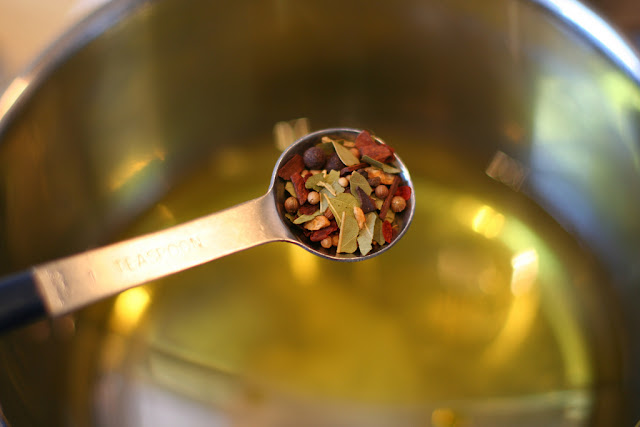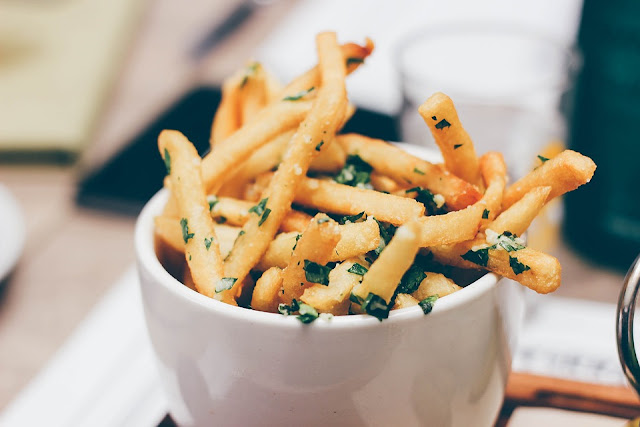10 Popular Pickles of India
The word Pickle is derived from a Dutch word PEKEL which means brine. To pickle means to marinate vegetables or fruits in brine/vinegar/vinaigrette for preservation and longevity. Pickling as a process came into being some 4000 years ago, where the seasonal produce was pickled to be consumed in the non-seasonal period.
Achar, uppinakaayi, lonacha, oorukai, ooragaya……different names- but all refer to one and only thing, our beloved, lip smacking, finger licking, yummy “PICKLE”.
We are a pickle nation…. Pickling in India is not a process, it’s a tradition. A reason for the family to bond. We love our pickles like babies—tending and caring for months. The process of pickling involves a lot of discipline, dedication and patience. In many households pickling is done as an annual ritual, where ladies (mostly of a joint family) get together under one roof to set kilos of pickle for the entire clan. Every region has its favourite pickle and every family has a traditional and authentic recipe to boast off.
Wicked Spoon Confessions brings to you some favourite Indian pickles from every region, to get your mouth watering in this chilly season!
1. Chukh:
A red, fiery, chutney pickle is only for those who dare chillies. Originally from the beautiful Chamba region of Himachal Pradesh, it’s a pickle to die for. Spicy red hot chillies are cooked and marinated in oil along with garlic and ginger, lemon juice, salt and some spices. It can be consumed like a chutney with your main course or as a pickle with just paranthas or chapattis. Chukh has a great shelf life and you can store it in air tight jars for later use. Also available as green chili, ginger and garlic chukh.
2. Aam ka Achar:
The king of fruits rules the pickle region too. Every state has a mango pickle to flaunt. The list is incomplete without the mention of this mango divinity of Punjab bursting with flavours from carom, cumin, fennel, mustard seeds, onion seeds /nigella, all drenched in mustard oil with raw mango chunks. It is then left in the sun for the solar heat to carry out the magic. The pickle is stored in air tight jars to ensure longevity and seal the flavours.
3. Kolhapuri Thecha:
Another chutney-pickle from Maharashtra, which will make your body sweat and your tongue swell with its hot flavour. Kolhapuri thecha has earned laurels, being the spiciest pickle sauce in the South-West region. Packed with a punch of kolhapuri red chillies (or any spicy variant) and a crunch of peanuts, salt, garlic and asafoetida is all you need to prepare your own Kolhapuri thecha. It goes well with bhakri/rice/dal/roti and even dosa. The thecha can be stored for months in pickle jars or air tight containers.
4. Gajar-Gobi- Shalgam ka achar:
Remember the days when during peak of winters mom or granny used to dry carrot, cauliflower and turnips to be pickled. This is one pickle which is made annually in many households, especially across the northern regions of the country (mostly in Delhi, Punjab, Haryana and Uttar Pradesh). For one reason-it’s the season to find the best of its produce. Red-juicy-crunchy carrots, turnips and snowy white cauliflowers, jaggery, powdered mustard, red chillies, garam masala (dried powdered condiments) salt, oil with coarsely ground ginger and garlic is all that one needs to prepare this pickle. It’s made in a jiffy and can be stored up to a year in sterilized jars.
5. Pachranga:
This assortment of vegetables and fruits is a speciality that one cannot afford to miss. As its name suggests, it is a combination of five things-raw mango, lotus stem, chickpeas, karonda, amla or even carrots. The chickpeas or kabuli chana are soaked overnight before using. Raw mango is chopped and sun dried for five hours before adding it to the mustard oil, salt, nigella/kalongi seeds/pounded fennel seeds/ mustard seeds along with other vegetables. The mix is stored in sterilized jars topped with more oil to soak the ingredients and it is kept in sun for around a week before consuming. This pickle can be stored for a year or more. This is the best accompaniment to lacchha, aloo or methi parantha.
6. Kasrod or fiddlehead fern pickle:
Is a speciality of Jammu and Kashmir region, especially when made in native Dogri style. This is the easiest of pickles to make, with minimal ingredients from the kitchen shelf. To prepare this you need a bunch of fiddlehead ferns (also known as kasrod, lingri or languda) cleaned, cut into about 1”pieces, boiled to tender and dried on a muslin cloth to remove excess water. Later, mustard seed powder, red chillies powder, and salt are added to smoked and cooled mustard oil along with the ferns. Voila! Toss them well and store in jars, before placing in sun for couple of days. You are ready to dig in to the authentic Dogri delight.
7. Aavakaya:
Is not a new name to many. Every Telugu family has its own recipe of this pickle to boast. Avakaya is a famous Andhra pickle made with raw mangoes. Bursting with tanginess of raw mangoes, spiced with the heat of red chillies—this pickle will leave you craving for more. Again, you don’t need elaborate ingredients, just simple kitchen stuff like mustard seed powder, red chilli powder, salt and gingelly oil, garlic cloves and fenugreek seeds to rev up Aavakaya at home. Combine everything with chopped mango pieces, and top with oil before placing in the sun. It can be consumed after a week of sun bathing.
8. Chicken pickle:
Kerala is home to many non-vegetarian pickle delights, from fish, pork, prawn to chicken, you name it and you have a pickled form of these. To make chicken pickle, first marinate the chopped pieces of boneless chicken with turmeric, spice mix (garam masala), red chilli powder and pepper powder for an hour. Next, fry the pieces of chicken and add to sautéed fenugreek, mustard seeds, asafoetida, ginger-garlic, pepper corns, whole red chillies and sprinkle salt to taste. Once cool, add vinegar, top up with extra oil and seal in air tight containers. Note that this pickle has to be kept refrigerated and should be ideally consumed within 3-4 months.
9. Baah gaaz and bhoot jolokia (bamboo shoot and king chilli) pickle:
Assam is the home to the spiciest chilli in world, known as bhoot jolokia or king chilli. The name says it all—this chilli is capable of ousting the ghost away. To prepare this ghost of a pickle, you need kokum, bamboo shoots, turmeric, chopped bhoot jolokia, salt and mustard oil. All ingredients except chillies are combined and kept in sun for two weeks sealed in a jar, once the bamboo shoots are fermented, a few chopped chillies are added and the jar is topped with mustard oil. The pickle is kept for a few more days before consuming.
10. Methi chana ka achaar:
Is a common pickle of Gujrat and Rajasthan region. This pickle is made with fenugreek seeds, chick peas and of course the king of fruits Mango. Ideally the Rajapuri variety of mango is used, for its juicy tangy edge. Fenugreek and chickpeas are soaked overnight, later drained and dried to be added to the chopped mango chunks along with turmeric powder, red chilli powder, yellow mustard powder, asafoetida and salt/rock salt with smoked and cooled mustard oil. This pickle is to be stored in sterilized jars and can be consumed with in a week of setting.
In India each pickle has tens of variants, every village, city, state or region has a pickle legacy to claim. We picked the famous few, if your favourite has found a spot we love to hear bingo! And if it hasn’t we still love to hear which one! Hope you enjoyed reading about these mouth-watering pickles:)
Achar, uppinakaayi, lonacha, oorukai, ooragaya……different names- but all refer to one and only thing, our beloved, lip smacking, finger licking, yummy “PICKLE”.
We are a pickle nation…. Pickling in India is not a process, it’s a tradition. A reason for the family to bond. We love our pickles like babies—tending and caring for months. The process of pickling involves a lot of discipline, dedication and patience. In many households pickling is done as an annual ritual, where ladies (mostly of a joint family) get together under one roof to set kilos of pickle for the entire clan. Every region has its favourite pickle and every family has a traditional and authentic recipe to boast off.
Wicked Spoon Confessions brings to you some favourite Indian pickles from every region, to get your mouth watering in this chilly season!
1. Chukh:
A red, fiery, chutney pickle is only for those who dare chillies. Originally from the beautiful Chamba region of Himachal Pradesh, it’s a pickle to die for. Spicy red hot chillies are cooked and marinated in oil along with garlic and ginger, lemon juice, salt and some spices. It can be consumed like a chutney with your main course or as a pickle with just paranthas or chapattis. Chukh has a great shelf life and you can store it in air tight jars for later use. Also available as green chili, ginger and garlic chukh.
 |
| Image courtesy www.placeoforigin.in |
2. Aam ka Achar:
The king of fruits rules the pickle region too. Every state has a mango pickle to flaunt. The list is incomplete without the mention of this mango divinity of Punjab bursting with flavours from carom, cumin, fennel, mustard seeds, onion seeds /nigella, all drenched in mustard oil with raw mango chunks. It is then left in the sun for the solar heat to carry out the magic. The pickle is stored in air tight jars to ensure longevity and seal the flavours.
 |
| Image courtesy www.placeoforigin.in |
3. Kolhapuri Thecha:
Another chutney-pickle from Maharashtra, which will make your body sweat and your tongue swell with its hot flavour. Kolhapuri thecha has earned laurels, being the spiciest pickle sauce in the South-West region. Packed with a punch of kolhapuri red chillies (or any spicy variant) and a crunch of peanuts, salt, garlic and asafoetida is all you need to prepare your own Kolhapuri thecha. It goes well with bhakri/rice/dal/roti and even dosa. The thecha can be stored for months in pickle jars or air tight containers.
 |
| Image courtesy www.generouslyseasoned.com |
4. Gajar-Gobi- Shalgam ka achar:
Remember the days when during peak of winters mom or granny used to dry carrot, cauliflower and turnips to be pickled. This is one pickle which is made annually in many households, especially across the northern regions of the country (mostly in Delhi, Punjab, Haryana and Uttar Pradesh). For one reason-it’s the season to find the best of its produce. Red-juicy-crunchy carrots, turnips and snowy white cauliflowers, jaggery, powdered mustard, red chillies, garam masala (dried powdered condiments) salt, oil with coarsely ground ginger and garlic is all that one needs to prepare this pickle. It’s made in a jiffy and can be stored up to a year in sterilized jars.
 |
| Image courtesy Neha Mathur |
5. Pachranga:
This assortment of vegetables and fruits is a speciality that one cannot afford to miss. As its name suggests, it is a combination of five things-raw mango, lotus stem, chickpeas, karonda, amla or even carrots. The chickpeas or kabuli chana are soaked overnight before using. Raw mango is chopped and sun dried for five hours before adding it to the mustard oil, salt, nigella/kalongi seeds/pounded fennel seeds/ mustard seeds along with other vegetables. The mix is stored in sterilized jars topped with more oil to soak the ingredients and it is kept in sun for around a week before consuming. This pickle can be stored for a year or more. This is the best accompaniment to lacchha, aloo or methi parantha.
 |
| Image courtesy www.placeoforigin.in |
6. Kasrod or fiddlehead fern pickle:
Is a speciality of Jammu and Kashmir region, especially when made in native Dogri style. This is the easiest of pickles to make, with minimal ingredients from the kitchen shelf. To prepare this you need a bunch of fiddlehead ferns (also known as kasrod, lingri or languda) cleaned, cut into about 1”pieces, boiled to tender and dried on a muslin cloth to remove excess water. Later, mustard seed powder, red chillies powder, and salt are added to smoked and cooled mustard oil along with the ferns. Voila! Toss them well and store in jars, before placing in sun for couple of days. You are ready to dig in to the authentic Dogri delight.
 |
| Image courtesy David Eger |
7. Aavakaya:
Is not a new name to many. Every Telugu family has its own recipe of this pickle to boast. Avakaya is a famous Andhra pickle made with raw mangoes. Bursting with tanginess of raw mangoes, spiced with the heat of red chillies—this pickle will leave you craving for more. Again, you don’t need elaborate ingredients, just simple kitchen stuff like mustard seed powder, red chilli powder, salt and gingelly oil, garlic cloves and fenugreek seeds to rev up Aavakaya at home. Combine everything with chopped mango pieces, and top with oil before placing in the sun. It can be consumed after a week of sun bathing.
 |
| Image courtesy www.placeoforigin.in |
8. Chicken pickle:
Kerala is home to many non-vegetarian pickle delights, from fish, pork, prawn to chicken, you name it and you have a pickled form of these. To make chicken pickle, first marinate the chopped pieces of boneless chicken with turmeric, spice mix (garam masala), red chilli powder and pepper powder for an hour. Next, fry the pieces of chicken and add to sautéed fenugreek, mustard seeds, asafoetida, ginger-garlic, pepper corns, whole red chillies and sprinkle salt to taste. Once cool, add vinegar, top up with extra oil and seal in air tight containers. Note that this pickle has to be kept refrigerated and should be ideally consumed within 3-4 months.
 |
| Image courtesy www.placeoforigin.in |
9. Baah gaaz and bhoot jolokia (bamboo shoot and king chilli) pickle:
Assam is the home to the spiciest chilli in world, known as bhoot jolokia or king chilli. The name says it all—this chilli is capable of ousting the ghost away. To prepare this ghost of a pickle, you need kokum, bamboo shoots, turmeric, chopped bhoot jolokia, salt and mustard oil. All ingredients except chillies are combined and kept in sun for two weeks sealed in a jar, once the bamboo shoots are fermented, a few chopped chillies are added and the jar is topped with mustard oil. The pickle is kept for a few more days before consuming.
 |
| Image source wikiHow - creative commons |
10. Methi chana ka achaar:
Is a common pickle of Gujrat and Rajasthan region. This pickle is made with fenugreek seeds, chick peas and of course the king of fruits Mango. Ideally the Rajapuri variety of mango is used, for its juicy tangy edge. Fenugreek and chickpeas are soaked overnight, later drained and dried to be added to the chopped mango chunks along with turmeric powder, red chilli powder, yellow mustard powder, asafoetida and salt/rock salt with smoked and cooled mustard oil. This pickle is to be stored in sterilized jars and can be consumed with in a week of setting.
 |
| Image courtesy www.goosebumpspickles.com |
In India each pickle has tens of variants, every village, city, state or region has a pickle legacy to claim. We picked the famous few, if your favourite has found a spot we love to hear bingo! And if it hasn’t we still love to hear which one! Hope you enjoyed reading about these mouth-watering pickles:)






Mouth watering Chukh and bhoot jolokia is one rare variety I had once and believe u me.. It does leave u with a swollen tongue and a craving for some more:).
ReplyDeleteYummylicous!!!
ReplyDeleteWow I must say u have done ur homework well
ReplyDeleteAll Pickles are looking vibrant and Especially that Chicken Pickle was Awesome and i loved it.
ReplyDelete“Your advice or REPEAT, REPEAT, REPEAT is dead on…I really enjoy reading your posts where I can get such useful information.
ReplyDeleteMahindra tractor price